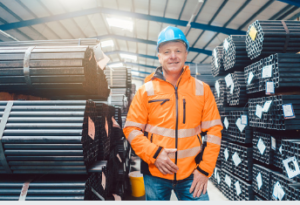Steel supplies are used in a variety of industries. They can be found in automotive, construction, food, oil, and many other fields, and steel is used in many different ways, including welding, heat treating, and metalworking.
Common uses of steel
Most modern buildings are built with durable skeleton made of steel. For example, the Home Insurance Building in Chicago was the first skyscraper to use a steel frame. In addition to its structural qualities, steel is a reliable material that can be reused in many ways.
 Stainless steel is another type of metal that is commonly used. This material is corrosion-resistant and can handle high temperatures without staining or rusting. It is also widely used for food transportation and medical equipment.
Stainless steel is another type of metal that is commonly used. This material is corrosion-resistant and can handle high temperatures without staining or rusting. It is also widely used for food transportation and medical equipment.
Structural steel supplies SA is the primary steel type used in building and infrastructure projects. It can be moulded into many different shapes and is exceptionally durable. Alloys are added to structural steel for more properties and can be custom-fitted to individual applications.
In addition to its structural qualities, steel is used to make appliances, such as kitchen and bathroom accessories. Many of these devices are made from stainless steel and are easy to clean. They are also lightweight.
High-carbon steels have a higher carbon content than low-carbon steels. However, the percentage of carbon in low-carbon steels is usually less than 8% of the composition.
Alloys are also commonly used to produce end products for the manufacturing industry. There are many alloys, each with its unique properties. For example, some are remarkably lightweight, while others provide excellent heat-working capabilities.
Common steel uses include automobiles, aircraft, ships, and train cars. In addition, 50% of the weight of a typical appliance is steel.
Besides these uses, steel is used in numerous other industries. For instance, it is the building block of telecommunications and transportation networks. It is also one of the most recycled materials.
Heat-treating processes available for steel
Heat-treating processes for steel involve heating, cooling, and a combination of both. These methods can change the crystalline structure of metal alloys and provide various benefits, and the processes include varying temperatures, cooling rates, and medium cooling types. There are three basic types of heat treatment for steel: tempering, annealing, and normalising.
Tempering is the most common type of heat treatment. This method involves heating a steel section to a temperature above the transformation temperature of the steel. Once the temperature is reached, the selection is held until structural changes occur within the metal. When the process is finished, the steel is reheated to reduce stressors.
Annealing is a type of heat treatment that involves heating and cooling at a rate that produces a refined microstructure. Various types of annealing are used, depending on the material and the purpose of the treatment. It is typically used to soften steel for cold working. However, it can also work for ferrous and non-ferrous materials.
Normalising is a form of annealing used to produce a uniform crystalline structure and enhance the properties of steel. It is often used for ferrous alloys that have been austenitic.
Normalising can remove the effects of a previous heat-treating process and produce pearlite, combining high hardness with toughness.
Carbonitriding is another heat-treating process. Also known as dry cyaniding, carbonitriding is a low-cost alternative to cyaniding. In this process, steel is heated above the A1 transformation temperature. For low-carbon steel, the core temperature is around 900 deg C.
Carbonitriding is a practical method of achieving surface hardness of up to 925 deg C. Carbonitriding is usually done in oil but sometimes in water. Some austenite crystals remain intact after quenching, while other structures, such as bainite, are formed.
Austenitisation is the first of the heat-treating processes for steel, and this process involves a polymorphic transition from BCC-ferrite to FCC-austenite. Austenite contains a weighted average of ferrite and austenite in the intercritical region. Austenite transformation into martensite can be induced by slowly cooling the metal to shallow temperatures.
Reduction of greenhouse gas emissions from the steel industry
Steel is one of the most important engineering materials for various industrial uses. However, it is also among the world’s most significant contributors to greenhouse gases. It is why decarbonisation should be a priority for the steel industry. Fortunately, many companies are working on new technologies to reduce carbon emissions.
One approach involves reducing emissions by switching to carbon-neutral EAFs. These plants can be powered by renewable electricity, but they will also need hydrogen to help process the iron.
Another approach involves using recycled steel scrap to produce steel. Melting steel scrap in an electric-arc furnace creates lower emissions of steel. Currently, about 7 per cent of emissions come from scrap. The optimal step in decarbonising will depend on the location, technology, and cost.
Some of the biggest producers in the global steel supplies SA industry have announced decarbonisation targets. In addition, several disruptive innovators are working on new technologies.
Decarbonisation will require hundreds of billions of dollars in investment. It will also require government interventions to make green steel competitive. A road map should combine long-term goals with quick wins. Several governments are paying close attention to emission reduction techniques in the steel industry.
For example, the United States and European Union have announced a plan to restrict the trade of high-emissions steel and aluminium. The two global partners have never before aligned their trade policies to confront the threats of climate change.
Meanwhile, China, the world’s largest steel producer, aims to cut its carbon emissions by nearly 30 per cent by 2025. Last year, it slashed 30 million tonnes of crude steel production and pledged another annual decline.